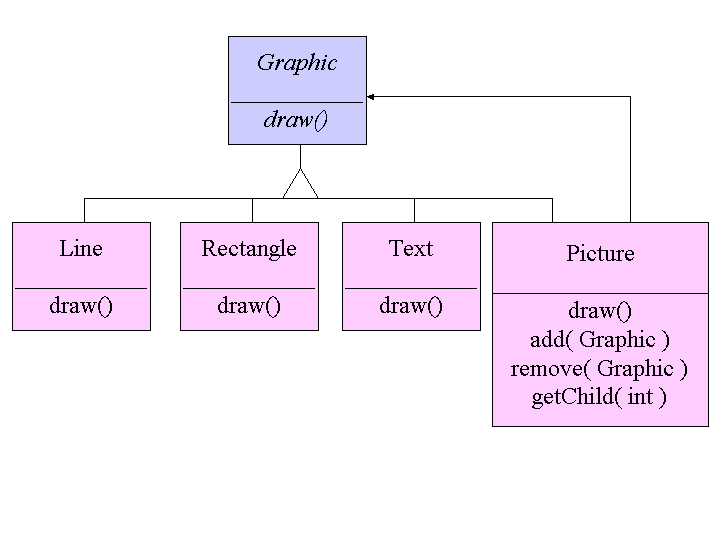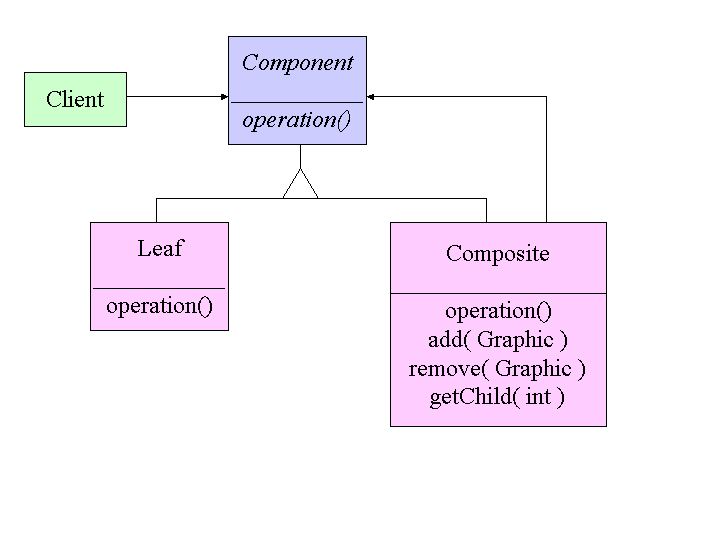| Purpose | Compose objects into tree structures to represent part-whole hierarchies
(aka group hierarchy). With composite, both individual objects and
compositions are treated uniformly by the client. Applications that recursively allow collections of objects to be grouped, such as graphics applications (e.g., drawing editors), often are viewed favorably by the user. To better exploit the polymorphism in such applications, the composite pattern embraces the recursive nature of the "group" structure ("group" is not being used here in the algebraic sense of the word). An example of this appears below. 
|
| Structure | 
|
| Consequences |
|
| Implementation |
|
| Sample Code | |
| Related Patterns | The Iterator pattern (see Implementation issues). |